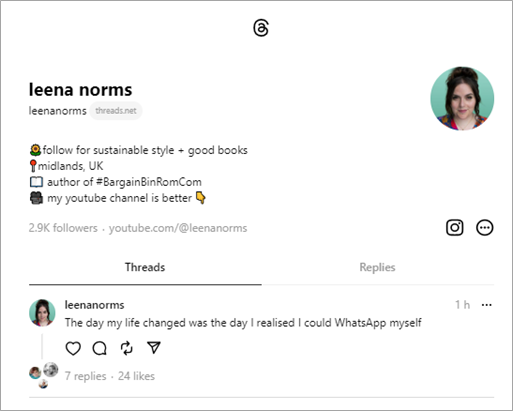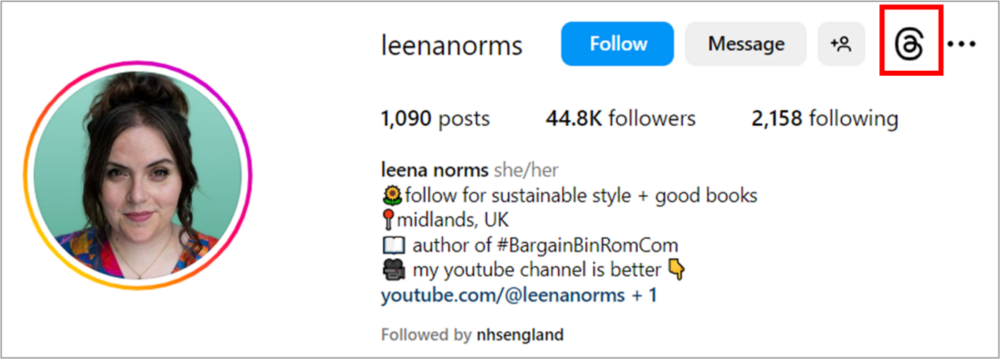In a conveniently timed-release mere days after Elon Musk announced limits on Twitter usage for non-paying users, Meta has released Threads. At it’s core, the platform is strikingly similar to Twitter, being an online space to share short writings and photographs. Nevertheless, Meta clearly intends to replace the famous blue bird with Threads, with Mark Zuckerberg spying a gap in the social media landscape now that Musk appears to be altering his platform fundamentally.
Threads is intrinsically linked to Instagram: you can’t set an account up without first having an Instagram account, and you cannot delete your account without deleting your Instagram profile simultaneously. Users also have the option to automatically import data from their Instagram account for ease of set up.
Despite having set record figures for user growth within the first days of launch, the platform is yet to launch in the EU due to regulatory concerns, and it does appear to be lacking several expected service features, which affect its current usefulness to OSINT investigators.

Fig 1. Example of a Threads profile on desktop
Appeal to Investigators
Integration with Instagram should mean that it is marginally easier to find social media accounts for subjects: find their Instagram account, and their profile will inform you whether they have a Threads account as indicated by the platform’s logo appearing at the top of the page, and will often take you directly to their Threads account with one simple click. This process is significantly easier than attempting to locate an Instagram and Twitter account that often may not have any identifiable similarities between them.

Fig 2. Threads link on an Instagram profile
A user’s unique username is carried directly over from Instagram to Threads. The integration of the two platforms also means that the identifiable features of an account – profile picture, biography, followers, for example – will exactly mirror those used on Instagram.
However, a significant difference with Twitter is that Threads currently does not support hashtags and keyword searching on the platform, meaning that investigators are limited in their ability to find images and posts of interest. Further to this, much like Instagram in its early years, Threads currently lacks a fully functioning desktop version of the platform.
The lack of these features could well be due to Threads being in its infancy, and we can only assume (or indeed hope) that features such as a desktop version, hashtags, and direct messages will eventually be introduced.
Appeal to General Users
Recent months have shown that a Twitter alternative is, for many, a need rather than a want. However, finding this platform is proving to be more difficult than initially assumed. The lack of trending topics on Threads hinders culturally relevant conversation and debate, and users have commented that the content on their Threads timeline is not diverse, or indeed interesting enough, possibly due to the gap left by the lack of hashtags and key word searching, and the inability to view a timeline that solely consists of accounts a user has chosen to follow.
With this in mind, users may be asking: with the carrying over of followers and algorithms from Instagram, will my Threads feed ever be able to resemble the carefully curated content that I view on Twitter?
Meta must also consider the importance of appealing to a younger generation in their model for Threads – Instagram’s prioritisation of images, and later videos, has allowed the platform to remain culturally relevant for over a decade, whilst TikTok’s short form video distribution has taken the world by storm in recent years. What can Threads offer that is not already being fulfilled by the other apps on a Gen Z’s smartphone?
From a NetWatch perspective, if Threads struggles to secure a large and active userbase, it will only remain a niche platform in our investigations. Several years ago, Twitter reliably provided a wealth of information for many of the subjects we were tasked with investigating, however as newcomers such as Instagram and TikTok overtook it popularity, we saw a decline in useful information being uploaded to Twitter. Further detailed analysis of these trends can be seen in our annual social media usage reports from 2021 and 2022.
With this in mind, we can only question what the longevity of Threads will be. One cannot help wondering if Meta’s apparent decision to release Threads at a time Twitter appears to be shooting itself in the foot, instead of at the right time in the platform’s development, will poison its chances of becoming cemented as a ‘go-to’ app on our smartphones.